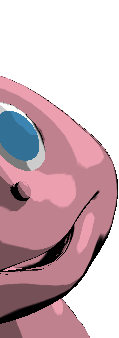
Our
focus has been on the creation of methods for adapting existing (good)
motions to meet new needs.
Core to any motion editing task is the issue of
describing what should change and what should not change as the motion
is transformed. Our goal is to permit motions to be annotated with properties
that should be preserved or changed, and to seek new motions that preserve
(or change) these properties while maintaining as many characteristics
of the new motion as possible. Such a formulation leads naturally to posing
motion editing as a constrained optimization...
-We want to find a new motion that, subject to the constraints
(e.g. the specific things to be preserved or changed) minimizes an objective
function that measures the difference with the original motion.-
Ideally, we would be able to provide a very rich
set of constraints and objective functions that map well to the ways we
would like to discuss motions. For example, we might want to specify that
we must preserve the physical realism and perfect ballet form of a motion
and minimize the amount we change its mood and grace.
In practice, we are limited in the types of constraints
and objectives that we can handle by pragmatic concerns. ?...? Since there
is very little understanding of what gives a motion its qualities, constraining
other motions to follow similar qualities is difficult at best. The types
of constraints we are currently working with are mostly physical; requiring
a hand to firmly grasp a doorknob or a foot to plant on the ground without
sliding.
The types of constraints
page describes many of the current constraints our system implements.
Papers
Approach
types of constraints
Software Infrastructure
Techniques
motion retargeting
path-editing
Downloads
Mailing List
SIGGRAPH
course notes
Related links
